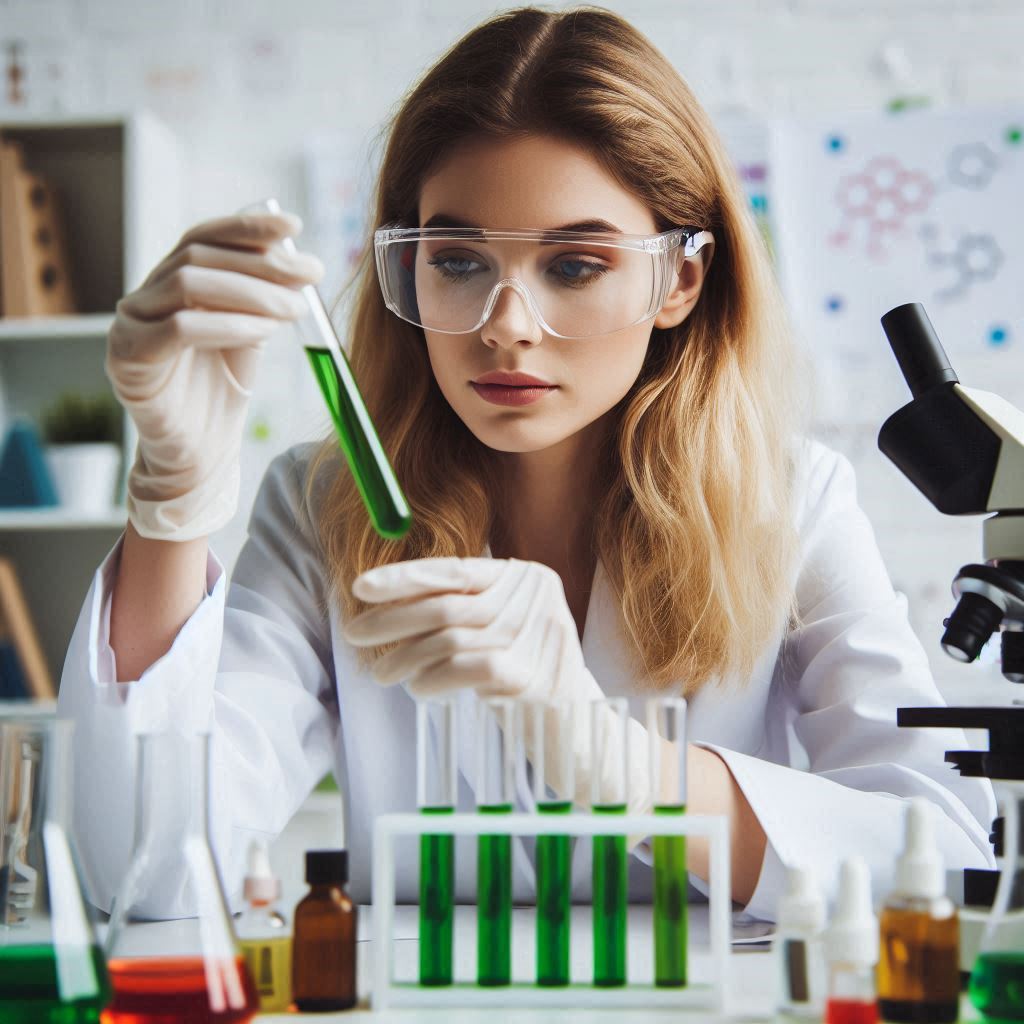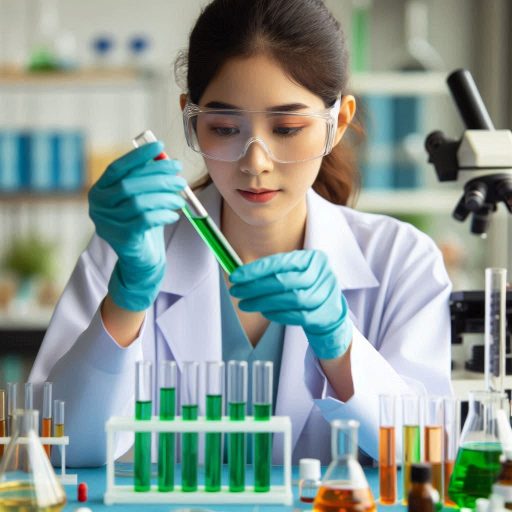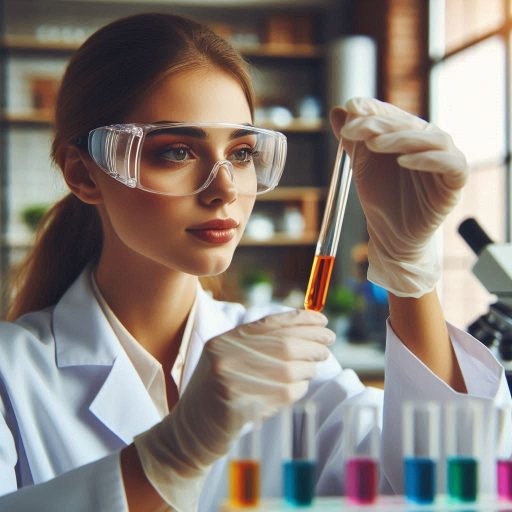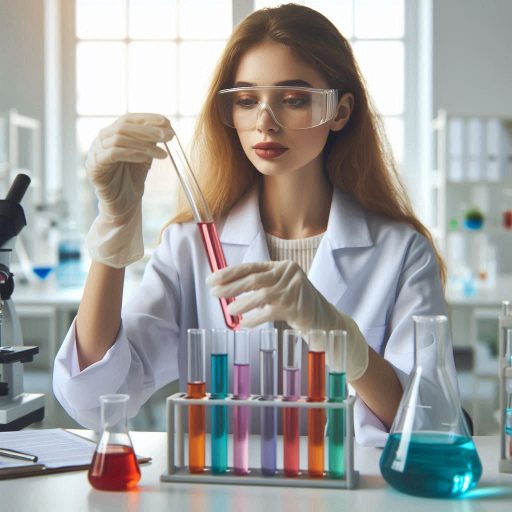Introduction
Toxicology is the study of how chemicals and substances affect living organisms, particularly regarding food and drug safety.
It evaluates the potential risks and harmful effects of various substances found in food products and medications.
Understanding toxicology helps identify safe levels of exposure and potential adverse reactions.
The importance of toxicology in ensuring food and drug safety cannot be overstated.
It plays a vital role in assessing the safety of food additives, pesticides, and pharmaceutical ingredients.
Toxicologists conduct rigorous testing to determine acceptable limits for chemical residues in food and evaluate the risks associated with new drugs.
Their research protects public health by preventing harmful substances from entering the food supply or pharmaceutical market.
Regulatory agencies, such as the FDA and EFSA, enforce toxicology standards to ensure food and drug safety.
These agencies rely on toxicological data to establish safety guidelines and approval processes.
They monitor products for compliance with safety regulations, conducting inspections and evaluations as necessary.
By enforcing these standards, regulatory agencies ensure that consumers receive safe food and effective medications.
Overall, toxicology plays a crucial role in safeguarding public health, guiding regulations, and promoting the safe use of chemicals in food and drugs.
History of toxicology in regulating food and drug safety
Evolution of Toxicology as a Science
Toxicology has evolved significantly as a science over the centuries.
Its origins trace back to ancient civilizations that used poisons for various purposes.
Ancient Egyptians and Greeks documented toxic substances and their effects.
However, the formal study of toxicology began during the Renaissance.
In the 16th century, Paracelsus introduced the concept that “the dose makes the poison.
” This principle emphasized the importance of dosage in determining toxicity.
Paracelsus’s work laid the foundation for modern toxicology.
As science progressed, researchers began to explore the mechanisms of toxicity more deeply.
The 19th and 20th centuries marked significant advancements in toxicology.
Scientists developed analytical methods to detect and quantify toxic substances.
This progress allowed for a better understanding of how chemicals affect living organisms.
Toxicologists began conducting systematic studies, focusing on the safety of drugs and chemicals.
Key Milestones in the Development of Toxicology Regulations
The development of toxicology regulations has been crucial for public safety.
In the early 20th century, several key milestones emerged.
The Pure Food and Drug Act of 1906 was one of the first significant regulations in the United States.
This act aimed to prevent the sale of misbranded or adulterated foods and drugs.
In 1938, the Federal Food, Drug, and Cosmetic Act expanded regulatory authority.
It required safety testing for new drugs before market approval.
This legislation marked a turning point in ensuring drug safety and efficacy.
The establishment of the Food and Drug Administration (FDA) in 1930 further strengthened regulatory oversight.
The 1976 Toxic Substances Control Act aimed to regulate chemicals in commerce.
This act allowed the EPA to evaluate and manage potential risks posed by chemical substances.
Over the years, various international agreements, such as REACH in Europe, have enhanced toxicological assessments.
These regulations emphasize the importance of comprehensive testing before a substance can be marketed.
How Toxicology Has Shaped Current Food and Drug Safety Standards
Toxicology has significantly shaped current food and drug safety standards.
The principles of toxicology guide the assessment of food additives and contaminants.
Toxicologists evaluate the safety of these substances to ensure they pose no risk to consumers.
In drug development, toxicology studies assess the safety and efficacy of new medications.
These studies inform regulatory decisions, ensuring only safe drugs reach the market.
Toxicologists identify potential side effects, guiding dosage recommendations and usage instructions.
Moreover, toxicology plays a crucial role in establishing safety thresholds for various substances.
Regulatory agencies use toxicological data to set acceptable daily intake levels.
This helps protect public health by minimizing exposure to harmful chemicals.
Toxicology also influences risk assessment practices in food safety.
It provides the scientific basis for evaluating risks associated with pesticide residues and contaminants.
This ensures that food products meet safety standards before they reach consumers.
Toxicology has evolved as a science, significantly impacting food and drug safety.
Key milestones in toxicology regulations have shaped the landscape of public health protection.
Today, toxicological principles guide the assessment of food additives, drug safety, and overall consumer protection.
As a result, toxicology remains essential for safeguarding public health in an increasingly complex environment.
Read: How Climate Change Is Impacting Plant Research
Impact of toxicology on food safety
Common Food Contaminants and Their Health Implications
Toxicology plays a crucial role in ensuring food safety.
Many food contaminants pose significant health risks to consumers.
Common contaminants include pesticides, heavy metals, and microbial pathogens.
Each of these can lead to severe health issues when ingested.
Pesticides are widely used in agriculture to protect crops.
However, pesticide residues can remain on fruits and vegetables.
Consuming these residues may lead to acute and chronic health effects.
Long-term exposure to certain pesticides has been linked to cancer and neurological disorders.
Heavy metals, such as lead and mercury, can contaminate food through various sources.
These metals accumulate in the food chain, posing serious risks to human health.
Lead exposure can cause developmental issues in children, while mercury can damage the nervous system.
Microbial pathogens, including Salmonella and E.
coli, are significant food safety concerns.
These pathogens can cause foodborne illnesses, leading to severe gastrointestinal distress.
Vulnerable populations, such as the elderly and immunocompromised, face higher risks.
How Toxicological Studies Help Identify and Regulate Harmful Substances in Food
Toxicological studies are essential for identifying and regulating harmful substances in food.
Researchers conduct extensive studies to assess the safety of food products.
These studies help determine acceptable exposure levels for various contaminants.
Toxicologists use in vitro and in vivo methods to evaluate the effects of contaminants.
These methods provide data on how substances interact with biological systems.
By analyzing the toxicity of these substances, researchers can establish safety guidelines for consumers.
Regulatory agencies rely on toxicological findings to set limits on contaminants.
For example, the Environmental Protection Agency (EPA) establishes maximum residue limits for pesticides.
These limits help protect public health by minimizing exposure to harmful substances.
Furthermore, toxicological studies guide the development of new food safety policies.
By identifying emerging contaminants, toxicologists can alert regulatory bodies to potential risks.
This proactive approach helps prevent future health crises related to food safety.
Examples of Toxicology Findings Leading to Food Recalls or Regulatory Action
Toxicology findings have led to numerous food recalls and regulatory actions.
One notable example involves the recall of spinach contaminated with E.coli.
In 2006, an outbreak linked to contaminated spinach resulted in numerous illnesses.
Toxicological investigations identified the source of contamination, leading to widespread recalls and increased regulatory scrutiny.
Another example is the regulation of certain food additives.
In 2018, toxicological studies raised concerns about the safety of certain food dyes.
As a result, some countries implemented stricter regulations on these additives.
This action highlighted the importance of ongoing toxicological research in ensuring food safety.
In 2020, the FDA recalled various seafood products due to elevated levels of mercury.
Toxicology studies confirmed that certain fish posed health risks, particularly for pregnant women.
This recall emphasized the need for continuous monitoring of heavy metals in food products.
Toxicology significantly impacts food and drug safety.
Understanding common food contaminants and their health implications is crucial.
Toxicological studies help identify and regulate harmful substances, protecting public health.
Examples of toxicology findings leading to recalls illustrate the importance of rigorous safety assessments.
Ultimately, toxicology plays a vital role in safeguarding consumers from foodborne hazards.
Read: Exploring the Different Branches of Geology
Impact of toxicology on drug safety
Importance of Toxicology in Drug Development and Approval Process
Toxicology plays a crucial role in drug development and approval processes.
It helps researchers understand the potential risks of new drugs.
Regulatory agencies require extensive toxicological data before approving any pharmaceutical product.
This data ensures that drugs are safe for human consumption.
During drug development, scientists conduct various toxicological studies.
These studies assess the effects of a drug on biological systems.
They evaluate how the drug behaves in the body, including absorption, metabolism, and excretion.
Toxicologists analyze this data to identify any potential harmful effects.
The FDA and other regulatory bodies rely on toxicological findings.
They use this information to determine whether a drug is safe for public use.
A thorough understanding of toxicology helps safeguard public health by preventing harmful substances from reaching the market.
How Toxicological Studies Determine Safe Dosages and Potential Side Effects
Toxicological studies are essential for determining safe dosages of drugs.
Researchers perform animal studies to assess toxicity levels at various dosages.
These studies help identify the minimum and maximum safe dosages.
Additionally, toxicologists analyze data from clinical trials.
They evaluate adverse events and side effects reported by participants.
This analysis helps establish the drug’s safety profile and potential risks.
By understanding how different dosages affect individuals, toxicologists can recommend appropriate dosing guidelines.
Toxicologists also investigate drug interactions and their potential effects.
They examine how various substances may influence a drug’s efficacy or toxicity.
This research is crucial for developing safe medication combinations for patients.
Moreover, toxicological studies provide insight into the long-term effects of drugs.
They help researchers assess chronic exposure risks, ensuring that drugs are safe for extended use.
These evaluations are essential for developing medications that require long-term administration.
Cases Where Toxicology Has Played a Critical Role in Drug Safety Regulations
Numerous cases illustrate the critical role of toxicology in drug safety regulations.
One significant example is the thalidomide tragedy in the 1960s.
This drug, initially marketed as a sedative, caused severe birth defects.
The incident highlighted the need for rigorous toxicological evaluations before drug approval.
In response, regulatory agencies implemented stricter safety standards.
They now require comprehensive toxicological data to assess potential risks.
This change reflects the vital role toxicology plays in protecting public health.
Another notable example is the withdrawal of the painkiller Vioxx in 2004.
Post-market studies revealed that Vioxx increased the risk of heart attacks and strokes.
Toxicological assessments of adverse events played a significant role in this decision.
The withdrawal demonstrated the importance of ongoing toxicological surveillance after a drug‘s approval.
The opioid crisis has emphasized the need for rigorous toxicological evaluations.
Understanding the addiction potential and harmful effects of opioids has become crucial.
Toxicologists contribute to developing guidelines for safe prescribing practices.
Toxicology significantly impacts food and drug safety.
It ensures that drugs undergo thorough evaluations during development and approval.
Toxicological studies help determine safe dosages and identify potential side effects.
Critical cases throughout history demonstrate the importance of toxicology in protecting public health and guiding regulatory policies.
By prioritizing toxicology, we can enhance drug safety and minimize risks associated with pharmaceuticals.
Read: Top Skills Needed for a Successful Geology Career

Emerging issues in toxicology and food/drug safety
New Technologies in Toxicological Studies
Toxicology plays a vital role in ensuring food and drug safety.
Recent advancements in technology enhance toxicological studies significantly.
High-throughput screening methods allow researchers to evaluate thousands of compounds rapidly.
These methods enable quick identification of potentially harmful substances, accelerating safety assessments.
In addition, in vitro testing has gained popularity in toxicology.
This approach uses cell cultures to assess the toxicity of substances.
In vitro methods reduce the reliance on animal testing, aligning with ethical standards.
Moreover, advanced computational models, known as predictive toxicology, simulate how chemicals interact with biological systems.
These models help researchers predict potential risks before conducting physical experiments.
Furthermore, omics technologies, including genomics and proteomics, analyze biological data on a larger scale.
These techniques provide insights into how substances affect cellular functions.
By integrating omics data, toxicologists can better understand complex interactions and mechanisms of toxicity.
Challenges and Limitations in Current Toxicology Practices
Despite advancements, toxicology faces several challenges and limitations.
One significant challenge is the time-consuming nature of traditional testing methods.
Regulatory requirements often demand extensive studies before approving new substances.
This lengthy process can delay the introduction of safe products to the market.
Another limitation is the variability in individual responses to toxic substances.
Factors like genetics, age, and health status can influence toxicity.
Current toxicology practices may not adequately account for these variations.
As a result, some individuals may experience adverse effects even when safety assessments indicate low risk.
The reliance on animal models poses ethical and scientific concerns.
While animal testing remains a standard practice, it may not fully predict human responses.
This discrepancy raises questions about the relevance of animal data to human health outcomes.
Potential Areas for Improvement in Toxicology Regulations
Improving toxicology regulations can enhance food and drug safety.
One potential area for improvement involves streamlining regulatory processes.
By adopting more flexible guidelines, agencies can accelerate the approval of safe substances.
This flexibility can help balance the need for safety with the demand for innovation.
Moreover, regulatory agencies should embrace new technologies and methodologies.
Integrating in vitro testing and computational models into regulatory frameworks can enhance efficiency.
These methods provide valuable data without relying solely on traditional animal studies.
Collaboration among regulatory bodies, industry, and academia can also drive improvements.
Sharing knowledge and resources can lead to better toxicological practices and innovative solutions.
Establishing partnerships can enhance research efforts and promote a more comprehensive understanding of toxicology.
Finally, regulations should prioritize transparency in toxicological assessments.
Public access to safety data can build trust and confidence in food and drug products.
Engaging with stakeholders, including consumers, can foster a culture of safety and accountability.
In essence , toxicology significantly impacts food and drug safety.
New technologies and methods enhance toxicological studies, improving safety assessments.
However, challenges and limitations persist in current practices.
By addressing these issues and refining regulations, the industry can better protect public health.
Embracing innovation and collaboration can lead to more effective toxicological practices.
Ultimately, improving toxicology regulations will enhance consumer safety and trust in food and drug products.
Read: What Does a Geologist Do? Career Overview and Insights
Discover More: Navigating Ethical Dilemmas in Botanical Research
Discover More: Career Paths in Meteorology: Opportunities and Growth
The role of regulatory agencies in enforcing toxicology standards
Key Organizations Involved in Food and Drug Safety Regulations
Several key organizations play vital roles in setting and enforcing food and drug safety regulations.
The Food and Drug Administration (FDA) is the primary authority in the United States.
The FDA regulates food safety, pharmaceuticals, and medical devices.
It establishes guidelines to ensure consumer safety and product efficacy.
Another important organization is the European Food Safety Authority (EFSA).
This agency assesses risks associated with food and feed in the European Union.
EFSA provides scientific advice to support European food safety regulations.
Similarly, Health Canada oversees food safety and pharmaceutical regulations in Canada.
These organizations collaborate to maintain high safety standards globally.
In addition to these agencies, various international organizations contribute to food and drug safety.
The World Health Organization (WHO) provides guidance on health regulations worldwide.
The Codex Alimentarius Commission establishes international food safety standards.
These collaborations help harmonize regulations and promote safe food and drug practices across borders.
Transform Your Career Today
Unlock a personalized career strategy that drives real results. Get tailored advice and a roadmap designed just for you.
Start NowEvaluating Toxicological Data for Regulatory Decision-Making
Evaluating toxicological data is crucial for regulatory decision-making.
This process ensures that products are safe for public consumption.
Regulatory agencies review extensive data on the toxic effects of substances in food and drugs.
They assess factors such as dosage, exposure levels, and long-term health impacts.
Toxicological studies typically involve animal testing and in vitro experiments.
Researchers evaluate how substances affect biological systems at various concentrations.
Regulatory agencies require rigorous testing to establish a substance’s safety profile.
This data informs decisions about product approval and labeling requirements.
Once agencies collect and analyze the toxicological data, they make informed decisions.
They determine whether a substance poses unacceptable risks to consumers.
If necessary, agencies may impose restrictions or require further testing.
This careful evaluation process helps protect public health and ensures that only safe products reach the market.
Collaboration Between Regulatory Agencies and Toxicology Experts
Collaboration between regulatory agencies and toxicology experts is essential for effective food and drug safety.
Regulatory bodies often consult toxicologists for their specialized knowledge.
Toxicologists provide critical insights into the safety profiles of various substances.
These experts help interpret complex toxicological data and assess risks.
Their expertise allows regulatory agencies to make informed decisions based on scientific evidence.
Collaborative efforts also enable the development of more effective regulations.
By working together, agencies and toxicologists can address emerging safety concerns promptly.
Toxicologists participate in advisory committees and working groups.
These groups discuss ongoing safety issues and share research findings.
This collaboration fosters a comprehensive approach to food and drug safety regulation.
It ensures that the latest scientific advancements are considered in regulatory frameworks.
In summary, toxicology significantly impacts food and drug safety through collaboration and regulation.
Key organizations like the FDA and EFSA set and enforce safety standards.
They rely on thorough evaluations of toxicological data for decision-making.
The partnership between regulatory agencies and toxicology experts enhances the effectiveness of safety regulations.
This collaboration ultimately protects public health and ensures that consumers have access to safe food and drugs.
Uncover the Details: Citizen Science Projects: Involving Public in Botany
Public perception and trust in toxicology
Addressing Common Misconceptions or Fears Regarding Toxicology
Toxicology plays a critical role in ensuring food and drug safety.
However, many misconceptions and fears surround this important field.
One common myth is that all chemicals are harmful.
In reality, toxicologists assess substances to determine safe levels of exposure.
Another misconception is that toxicology primarily focuses on harmful effects.
While this is true, toxicologists also study beneficial effects.
Many substances can be safe or even beneficial at appropriate doses.
Understanding this balance is crucial for public perception.
People often fear that food and drugs contain unsafe levels of toxins.
However, regulatory agencies implement strict guidelines to ensure safety.
Toxicologists conduct extensive testing to evaluate risks associated with food and drug consumption.
Their work helps reassure consumers that products on the market are safe for use.
Additionally, some fear that scientific findings are manipulated for profit.
Transparency in toxicological research can alleviate these concerns.
Providing clear and accessible information helps build trust between consumers and industry.
Transparent Communication of Toxicological Findings
Transparent communication is essential in toxicology.
When toxicologists share findings openly, they foster trust with consumers.
Clear explanations about how safety assessments are conducted help demystify the process.
Transparency encourages consumers to engage with scientific findings rather than fear them.
For example, when a new drug is approved, detailed information about its safety profile is essential.
Toxicologists should communicate the research methods used to assess risks.
This openness allows consumers to understand the science behind safety regulations.
Public forums, educational campaigns, and social media can facilitate this communication.
Toxicologists can engage with consumers by answering questions and addressing concerns.
These efforts help bridge the gap between science and public understanding.
Furthermore, communicating both the benefits and risks associated with food and drugs is vital.
Toxicologists should explain how potential risks are managed through rigorous testing and monitoring.
This balanced approach promotes informed decision-making among consumers.
Educating the Public on the Importance of Toxicology
Educating the public about toxicology is crucial for promoting food and drug safety.
Schools, community organizations, and online platforms can serve as venues for education.
Workshops, seminars, and webinars can increase awareness of toxicological principles and their applications.
Engaging materials, such as infographics and videos, can make complex concepts more accessible.
These resources can simplify information about how toxicologists assess risks.
Simplified explanations can help demystify toxicology and its significance in everyday life.
Collaboration between toxicologists and public health organizations can enhance education efforts.
By working together, they can create comprehensive campaigns that address public concerns.
These initiatives can promote understanding of the importance of safety assessments in food and drug production.
In essence, addressing misconceptions about toxicology is vital for public confidence.
Transparent communication of toxicological findings fosters trust between consumers and the industry.
Educating the public about the importance of toxicology ensures informed decision-making regarding food and drug safety.
By promoting awareness, we can create a healthier and safer environment for everyone.
You Might Also Like: Advancements in Optometry: Latest Research and Technology
Find Out More: Best Universities for Studying Pharmacology in the USA
Conclusion
Toxicology significantly impacts food and drug safety by assessing the potential risks associated with chemicals and contaminants.
Toxicologists evaluate food additives, pesticides, and drug formulations to ensure they meet safety standards.
Their work helps identify harmful substances that could pose risks to consumers.
Understanding the effects of exposure to these substances is crucial for protecting public health.
Toxicologists conduct studies to establish acceptable exposure levels and safety thresholds.
They provide essential data that inform regulatory decisions and guidelines, ensuring that food and drugs are safe for public consumption.
Moreover, toxicology plays a key role in monitoring food and drug products throughout their lifecycle.
Continuous assessment helps detect new risks as products evolve, providing a dynamic approach to safety.
Despite significant advancements, areas for further research and improvement in toxicology practices exist.
For example, more studies are needed on the long-term effects of chemical exposure and interactions between multiple substances.
Additionally, researchers should explore innovative testing methods that reduce reliance on animal models while ensuring safety.
Toxicology profoundly influences food and drug safety.
Its role is vital for public health protection, but ongoing research is essential for addressing emerging challenges in the field.
[E-Books for Sale]
The Big Book of 500 High-Paying Jobs in America: Unlock Your Earning Potential
$19.99 • 500 High-Paying Jobs • 330 pages
Explore 500 high-paying jobs in America and learn how to boost your career, earn more, and achieve success!
See All 500 High-Paying Jobs of this E-Book
1001 Professions Without a Degree: High-Paying American Jobs You Can Start Now
$19.99 • 1001 Professions Without a Degree • 174 pages
Discover 1001 high-paying jobs without a degree! Unlock career tips, skills, and success strategies for just $19.99!




